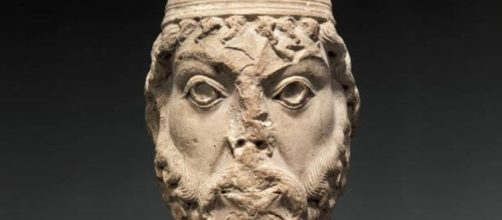“The art-world stage is an endless scene of sleight of hand.” That’s notorious Manhattan art dealer Todd Volpe talking in his autobiography “Framed.” You may remember the headlines when the FBI arrested him in 1997 for swindling celebrity collectors like Jack Nicholson and Madonna. When he talks about fraudulent behavior by galleries and museums, it’s clear that no one plays the counterfeit art game by himself. And given his point that nefarious dealings are “endless,” it shouldn’t be a bombshell that the limestone sculpture of King David’s head, held by the Metropolitan Museum of Art as an antique circa 1145, may be fake.
Last year, this column noted a few counterfeited paintings in museum collections. Anyone in the art world stunned by this conjures up Captain Renault in “Casablanca” famously saying, “I’m shocked, shocked to find that gambling is going on in here,” as he pockets his winnings.
Claim to fame
So it was unexpected that Salon magazine’s knowing art writer Noah Charney, who authored the 2015 book “The Art of Forgery,” would characterize news about the dubious Met head as a “scandal.” If the sculpture is proved fake, the only scandal is the identity of the man who got the museum to acquire it - James Rorimer. He used to be the museum’s curator of medieval art. He also used to be one of the Monument Men famed for rescuing treasures, not ripping treasure houses off.
The authenticity of the carving became an issue when retired antique dealer Robert Walsh bought a carving that looks just like the Met head, except forensic tests, showed that his purchase was older and certainly worth more than the $600 he paid for it at an antique shop. But when he told the Met about it, he was turned away. Never mind that Rorimer obtained the sculpture from a shady French dealer known for getting fakes into leading museums. How could Rorimer not have known that?
Denying reality
Walsh’s further probing showed that the Louvre also bought the same head of King David from the same unscrupulous dealer. But unlike the Met, the French readily removed the work from exhibition after making forensic tests of its own.
Charney rightly points out that questions about authenticity could be easily resolved if the New York museum would allow the age test. Turning a blind eye to the matter brings to mind another flick, this one from 1997 called “Bean.” It’s about a simple-minded caretaker at the British National Gallery tasked with carting Whistler’s painting of his mother to the L.A. Museum. On the way, he accidentally ruins the painting and blithely replaces it with a reproduction that he varnishes to make it look like a painting. And here’s the kicker: no one in the U.S. art world blinked. Maybe when Volpe said, “dealers are known to fudge purchases,” it’s such a commonplace, that it ended up in a mainstream movie as a joke.

